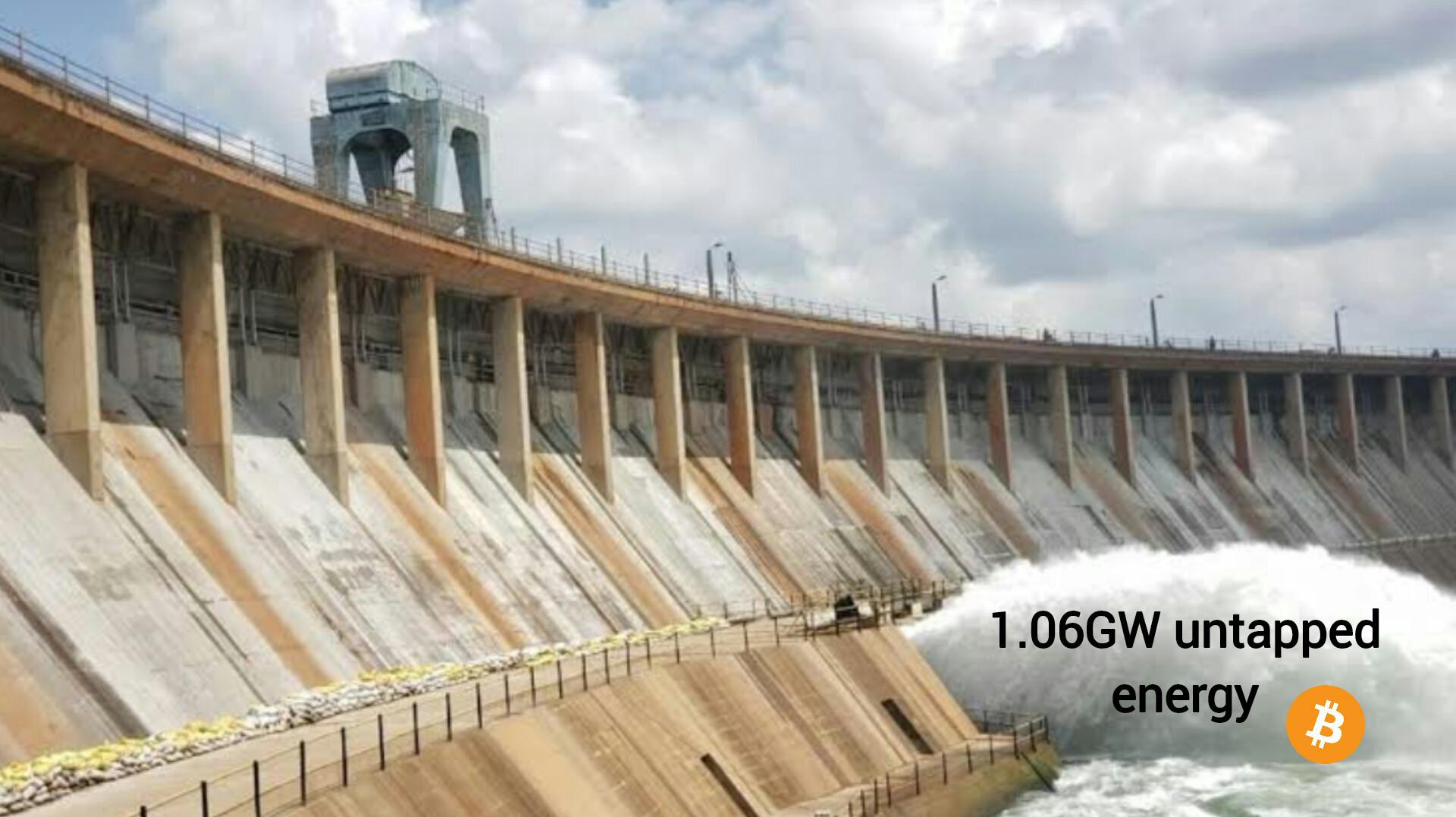This is a collaborative article using Chowa by @maken8 and @geraldjosephk.
A Brief History of Energy-Backed Money
On Dec. 4, 1921, the New York Tribune published an article unlike previous others.
The article chronicled a very novel plan by Henry Ford of Ford Motors — the most successful car company in the world at that time — in partnership with Thomas Edison — the visionary inventor of electric bulbs and a major stakeholder in many electricity power plants and electric transmission and distribution companies.
The two men envisioned replacing gold with an energy currency that Ford believed would break the banking elite’s grip on global wealth and put an end to wars over gold.
(Above: Front page of the New York Tribune dated Sunday, Dec. 4, 1921. Source: Library of Congress.)
Alas, Henry Ford’s currency couldn’t have stopped wars any more than preaching about how peace stops wars.
His plan failed because he had not found a way to:
1. Create self-sovereign property rights around his currency: Anybody could still seize one’s HEP dam unless they had government protection, or destroy it easily and sabotage one’s finances for decades.
2. Decentralize the currency to garner interest in everyone: If only rich people like Ford could afford a HEP dam, then only they could make the currency rules. I guess one would rather trust the government’s currency, as elected officials have to answer to their citizens.
The two problems above remain fatal to any upstart currency that would try to one-up the US dollar and other fiat currencies. For example, E-gold failed to protect the self-sovereign property rights of its holders since the US government shut it down easily when it got too big. It processed transaction clearance in gold. Gold can be seized.
Some other currencies after E-gold were protected from seizure by cryptography and electricity (Proof-of-Work / PoW), and could thus protect their holders’ self-sovereign property rights. However, they failed because they were not decentralized enough.
For example, Hal Finney’s RPOW, which used electricity to prevent spam via PoW (Proof-of-Work) verified transactions. So it was energy-backed in that regard.
But it had the problem of having all the currency operations run on a single server. Hence, it was not decentralized and was centralized around Hal Finney.
Moreover, with very little truncation of redundant data, the data blockchain grew so big that the system couldn’t sustain it.
It was very impressive, though, and it set the stage for the first successful energy-backed digital currency ever.
The First Successful Energy-Backed Currency – Bitcoin
The history of Bitcoin has been retold countless times all over the internet.
What is of interest to us is that Bitcoin was launched by the pseudonymous Satoshi Nakamoto as the first successful electric-energy backed currency.
This is because it solved the two problems that the energy-backed currency of Henry Ford and Thomas Edison couldn’t. After a shaky start, Bitcoin is now recognized as a currency and an asset in multiple countries around the world, including in the United States – home of the world’s global reserve currency, the US dollar.
Two Possible Paths for Bitcoin
There are currently two paths for Bitcoin.
The buzzing path right now is the path of Institutional adoption via Bitcoin’s Store-of-Value (SoV) function.
This rides on Bitcoin’s asset-value proposition to make impressive amounts of profit for institutions and individual holders. All fundamentally because Bitcoin’s absolute scarcity of 21 million coins allows it to supercharge its Store-of-Value function so that it stores value better than any other asset.
Because you can always make more of every other asset.
The Second Path is the path of Building Utility around Bitcoin.
That is, actually using it as a currency – hence the Medium-of-Exchange (MoE) function – so that the Store-of-Value is pegged to real economic activity and not only (and I’ll say simply) the scarcity of the coins.
Imagine this
Imagine someone bought 10 million bitcoins tomorrow.
The price would go to $10 million+ but no new productive capital will have entered the global economy. It would be a speculative jump, and while it would be good, it doesn’t have much use.
Now imagine we were to turn our surplus Electrical energy, produced in the Gigawatts world over, towards serving Bitcoin payments, mining, electricity metering, etc. I envision gains in electricity productivity and better market-fit worldwide in leaps and bounds.
The kind of leaps that Nikola Tesla envisioned.
Allow me to introduce you to my co-author, @geraldjosephk, to take it on from here.
Uganda’s Electricity Sector x Bitcoin
Uganda has a surplus of roughly 1.060GW.
Uganda’s electricity sector is rapidly evolving. The last decade has seen major investments in generation, grid expansion, regulation reforms, and the rationalization of agencies. As of mid-2024, Uganda’s installed capacity stands at approximately 2.048 gigawatts (GW), a massive increase from about 1.251GW in 2019. Hydropower is the principal source of electricity at 84%, followed by Bagasse at 7%, then thermal electricity at 5% and lastly solar at 4%.
A generation supply currently exists with a peak demand of around 988 Megawatts (MW). Therefore, Uganda has a surplus of roughly 1.060GW.
About 180MW of the surplus is exported to neighboring countries Kenya, Rwanda, and Tanzania through the East African Power Pool EAPP. Thus, about 808MW is treated as deemed energy paid by Ugandan taxpayers. This surplus can be utilized in bitcoin mining. Bitcoin has proven to be a great speculative asset that Uganda can tap into to finance its infrastructure development.
Uganda is in a position to utilize the energy surplus from renewables for bitcoin mining by leveraging its hydroelectric energy to attract foreign investment and monetize the surplus capacity. Uganda also possesses a high grid availability and is increasing in rural areas. Uganda could borrow a leaf from Ethiopia’s energy model in terms of policy and digital infrastructure.
As of early 2024, Ethiopia had an installed electricity generation capacity of 5,200 MW, of which approximately 90% came from hydropower, with the remainder supplied by wind (8%) and thermal (2%) sources. It costs approximately $0.01 per kWh in Ethiopia, but crypto miners are charged three times this amount at $0.032kWh. Crypto mining also brings the Ethiopian government much-needed foreign currency, as these companies pay for electricity in US dollars, addressing the country’s acute shortages. Ethiopia currently accounts for 2.5% of the global hash rate, a measure of the computational power dedicated to Bitcoin mining.
Uganda can utilize generation points, especially night-time load gaps. 300-500MW of electricity can be dedicated to commercial bitcoin mining zones which can be in areas around Karuma and Isimba hydropower stations.
Just like Ethiopia’s EEP-INSA model, Uganda can establish a multi-agency task force comprising of Electricity Regulation Authority (ERA), Uganda Energy Credit Capitalization Company (UECCC), Uganda Electricity Generation Company Limited (UEGCL), Uganda Electricity Transmission Company Limited (UETCL), Uganda Investment Authority (UIA), Uganda Revenue Authority (URA), Ministry of ICT, and Bank of Uganda (BoU) to establish designated crypto mining and digital infrastructure zones in Karuma, Tororo, Gulu, and Hoima.
This task force can ensure grid stability, optical fiber internet, and physical security. ERA currently sets average industrial power tariffs between 0.08/kWh and 0.12/kWh. Depending on the voltage level and consumer category. For potential foreign or domestic mining operations, ERA can place special tariff arrangements under large industrial or extra-large power consumer frameworks. Bitcoin mining, being an energy-intensive activity, has the potential to act as a demand anchor, especially in off-peak hours or in underutilized grids. This can enhance grid stability, improve load factor, and help utilities recover fixed costs more efficiently, ultimately contributing to a lower average cost of electricity across the system. URA would provide 5–7-year tax holidays for miners using green-powered sources. UECCC would fund Uganda-owned micro-mining cooperatives.
Another hurdle to overcome is regulation. Uganda needs a clear regulatory framework around blockchain and cryptocurrency. The framework can be executed in two phases. In the first phase, BoU controls commercialization by legalizing bitcoin mining as a digital commodity operation, licensing large-scale miners via ERA in partnership with the ICT ministry, and lastly requires 100% renewable energy usage while complying to ESG regulations. In the second phase, channels can be established to allow foreign remittances via cryptocurrencies to encourage blockchain innovation and establish state own rigs to boost forex.
This model can be used as a benchmark for any nation rich in renewable energy resources.













